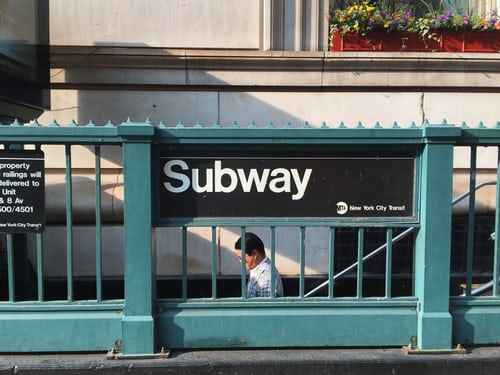
By ZION DECOTEAU
With the MTA in deep financial distress, requesting $8.9 Billion on top of an already received $3.9 Billion bailout, the agency is threatening fare hikes and layoffs.
So what does an average MTA employee have to say about all this?
Curtis Jones, 54, is a power distribution maintainer at the MTA. He’s worked at the agency for the last 24 years. No surprise that Jones says the union does not support layoffs.
“The employees and the union are against any cuts as far as to staff, or routes, or anything having to do with production or work,” he said.
But the MTA reports it may have to slash subway service up to 40%, commuter rail service by 50% and axe about 7,200 jobs due to financial constraints. One of the jobs that has been under review for years is the necessity of station agents.
MTA records show that 83 percent of fares were sold by machines in 2017. Thus, commuters only went to booths for fare purchases about 17% of the time. Fears of coronavirus transmission led the MTA to suspend cash handling at all subway booths. Except for reduced fare, senior citizen and disability purchases, customers will have to use vending machines.
Jones, in contrast, maintains safety is a major reason why booth agents should remain. “The number one concern is safety,” he insisted. ” The number two is that basically New York City is a very different city that is more modern. The city is so old that just eliminating stations and station agents–all that does is create more of a problem and backlog and generally around safety.”
Alan Saly, director of publications for the Transport Workers Union (TWU) Local 100 agrees. “Station Agents are necessary because a human presence in subway stations is necessary to protect life and property and also to guide tourists and others unfamiliar with the system,” Saly responded via email. “They are a deterrent to crime,” he added.
A major contributor to the MTA’s current financial woes is it’s low ridership. Stay at home orders plunged ridership 87% in March. According to MTA.info, as of October 1, 2020 subway ridership was 1.8 million, down 66 percent from exactly a year earlier. Bus ridership was 949,000, down 59 percent from exactly a year earlier. Those numbers are far below the average 5 million daily riders on subways and just under the average 1.8 million riders for buses pre COVID. On March 6th, the low ridership, stay at home orders, and a need for systemwide cleaning led the MTA to shut down subways from 1-5 AM every night indefinitely.
Gov. Andrew Cuomo says overnight shutdowns have been an opportunity for the agency to embark on crucial construction projects, but also reported MTA workers are skeptical about that claim. Jones’ sentiments are similar to the skeptics: “The only way to do it is that you have to shut down for a period of more than just five hours a night, that you can really get something done,” he said. “No, it hasn’t helped at all.”
Overall, Jones — like many —says the MTA needs a federal bailout to remain functional. “The federal government has to step up and help improve the system” Jones said, “because basically if — the revenue that’s coming in, particularly the New York City transit, is not enough for the type of maintenance that’s needed for the system to modernize, upgrade and bring it to the twenty first century.”
When it comes to job cuts, union groups like Saly’s remain firm on protecting jobs: “TWU Local 100 has successfully fought for conductor and station agent jobs for decades, and we will continue to do so with all resources at our disposal”

Leave a Reply
You must be logged in to post a comment.